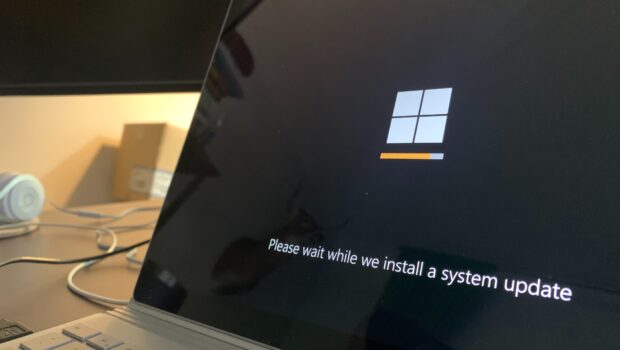Windows Will Have A New Major Release Every Three Years
Microsoft is switching up timelines for Windows update schedules (again) in a seeming return to their historical schedule of a major release every three years.
Until last year Microsoft’s approach was to roll out one massive feature update once a year.
A major release every three years (again)
The current word is that Windows will return to its old schedule of one major release every three years. They aim to support the major releases by also rolling out seasonal feature updates. These smaller updates, called “Moments,” will roll out quarterly.
This changed schedule signals a return to Microsoft’s traditional three-year release cycle for major versions of Windows.
So when will the next big release take place, then?
Microsoft’s next big release’s scale and date seem to be shrouded in confusion.
The next major release is expected in 2024 and is widely tipped off as Windows 12. But industry expectations were that the 2023 update, known as Sun Valley 3, would go a long way towards remedying some of the bugs and missing features of Windows 11 before Windows 12 comes along.
But the implication of the new roadmap is that the release of this year’s big Windows 11 update – Sun Valley 3 client update – may be delayed.
If that’s the case, speculation goes, then the 2023 Sun Valley 3 release could get parceled into segments and delivered via “Moments” updates to pave the way for the newly planned Windows 12 major update in 2024.
Will Microsoft release Sun Valley 3 mainly via “Moments”?
Since the new roadmap officially commences when Microsoft releases Windows 11 version 22H2 (SunValley 2), the implication is that Microsoft will run out of its current product release cycle before it can complete the SunValley 3 client update.
Currently, the status of the 2024 release of Windows is undetermined, except that it has not moved far along the early planning and engineering phase. Internal sources informally refer to it as “Next Valley”, which has fueled speculation that Next Valley might be Windows 12.
New Windows 11 Features will keep arriving via Microsoft Moments
Be that as it may, the end result is that, for the foreseeable future, newly added features for Windows 11 will continue to arrive via quarterly drops.
Large businesses are keen to find out whether these changes in services will also apply to Windows 10. As enterprise clients, many companies dislike the idea of unpredictable new futures arriving as and when it pleases Microsoft.
Does the new schedule apply to Windows 10, too?
If the new schedule also applies to Windows 10, Microsoft risks alienating their enterprise clients who could build up resistance to Windows 11. Businesses with no control over when or how new features arrive on their users’ devices will almost certainly dig in their heels. They will resist moving to Windows 11 for as long as possible.
There is no clarity on whether Microsoft will still offer its annual Windows feature updates for Windows 10 and 11. Windows has neither removed it from the calendar nor confirmed the expected Windows 11 22H2 release date for this year.
We have also not confirmed the release date of Windows 10 22H2, which is probably due around the same time as Windows 11 22H2. The only certainty, verified by Microsoft, is that support for Windows 10 ends in October 2025.
Will Windows 10 still be supported after October 2025?
The burning question for most Windows users will be: How will the planned changes affect the support schedules for the various Windows releases? Will future Moment
feature drops trigger a new support countdown clock, or will Microsoft use the Moment drops to extend Windows support windows?
The majority of Microsoft’s customers are business users. Businesses need certainty to help them plan for the future. Microsoft is keeping mum – and that’s not very helpful.
Impact of the schedule on cybersecurity according to the “Man in the Street”
In principle, every new feature represents a potential new attack surface on what is arguably the most important operating system in the world. Do the changes to the schedules present a potential security risk? Will there be room in the ever-changing schedule and penciled-in release dates to counter the ever-escalating cyber war on ordinary users?
For non-enterprise users at the mercy of Microsoft’s seemingly helter-skelter approach to updates, it has never been more important to:
● use an advanced VPN with threat protection capabilities. However, pick up a premium one. Free VPNs tend to sell your data to third parties or are known for their data leaks. For example, if you wonder, is NordVPN leaked? For this, always search for official statements from the provider itself;
● shell out money for an additional layer of premium malware protection; ● conscientiously apply security updates.
Cover Image by Unsplash












